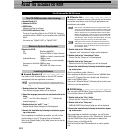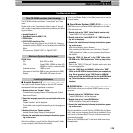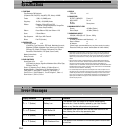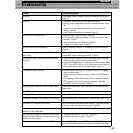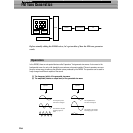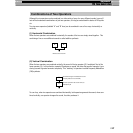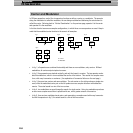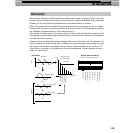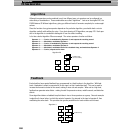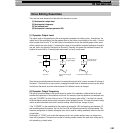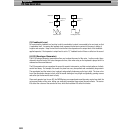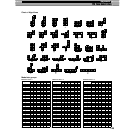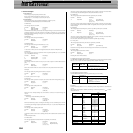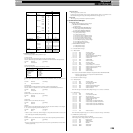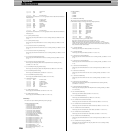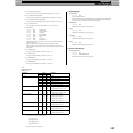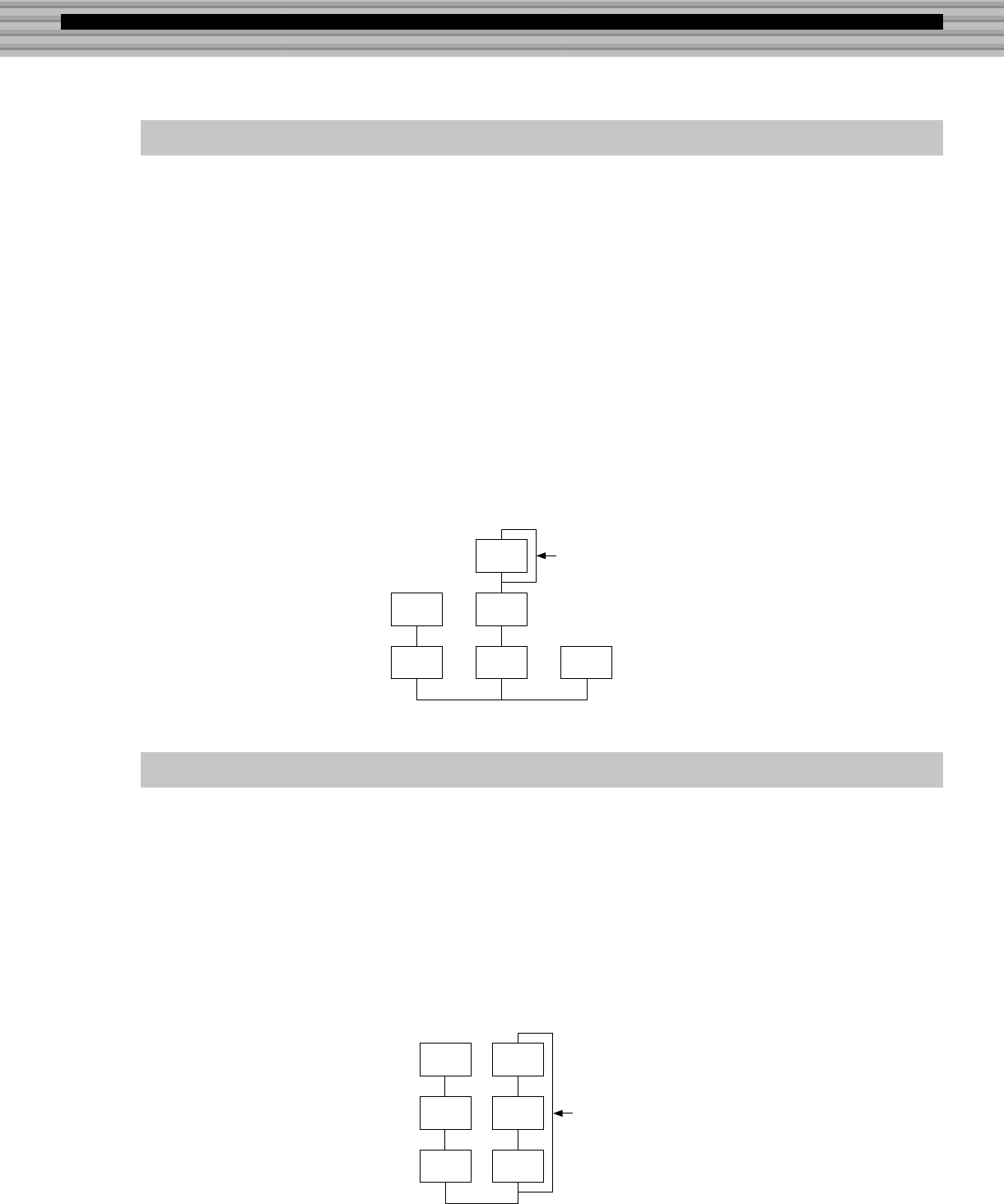
FM Tone Generation
120
Appendix
Although two operators can be combined in only two different ways, six operators can be configured in a
wide variety of combinations. These combinations are called “algorithms.” Just as on the original DX7, the
DX200 features 32 different algorithms, giving you different levels of harmonic complexity for various appli-
cations.
Since the function of any given operator depends on the particular algorithm, you should check a voice's
algorithm carefully while editing the voice. For a chart showing all 32 algorithms, see page 123. Each oper-
ator in the algorithm is numbered to distinguish it from the others in editing.
Let's take a look at algorithm 28 as an example. The various operators function as follows:
Operator 1...........Carrier; is modulated by Operator 2, and outputs the resulting sound.
Operator 2...........Modulator; modulates Operator 1.
Operator 3...........Carrier; is modulated by Operator 4, and outputs the resulting sound.
Operator 4...........Modulator; modulates Operator 3.
Operator 5...........Modulator; modulates itself with a feedback loop, and modulates Operator 4.
Operator 6...........Carrier; outputs a sine wave.
Each algorithm has a special feedback loop, programmed to a fixed location in the algorithm. With feed-
back, a modulator's output is connected to its own input, so that it modulates itself. This can be used to
increase the harmonic content of the sound, making it more rich and complex. When set to a high level,
feedback can generate noise effects - making it useful for percussive voices, metallic sounds, and distortion
effects.
Some algorithms feature a feedback loop that takes in two or three operators as a group. One such example
is algorithm 4 shown below, in which the output of operator 4 is returned to the input of operator 6, thus
modulating the entire stack. This provides even greater possibilities for tonal variation and richness.
Algorithms
2 4
1 3 6
5
Algorithm 28
Feedback loop
(see next section)
Feedback
5
4
6
2
1
3
Algorithm 4
Feedback loop



